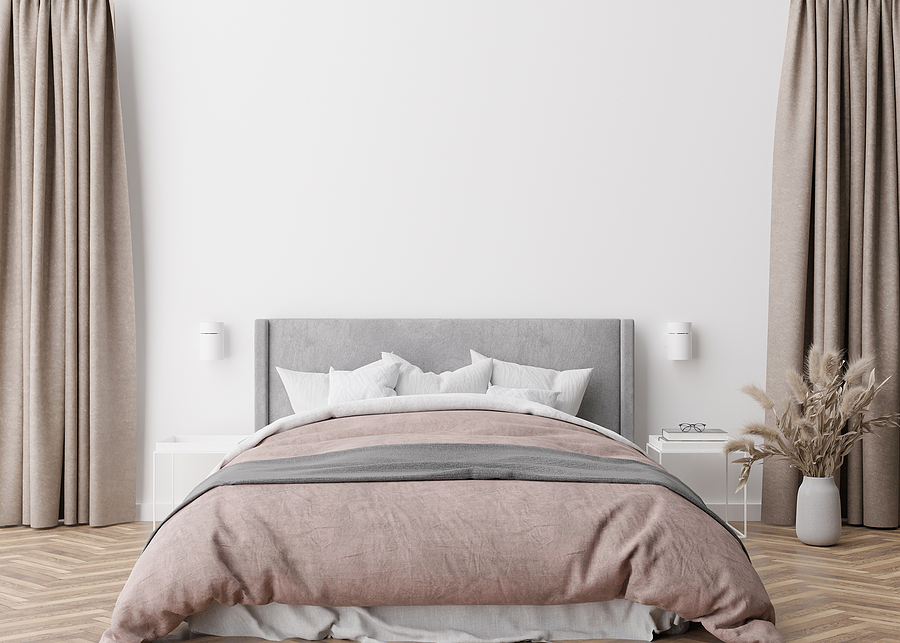Color plays a powerful role in how we feel—from the calming blue of the sky to the energizing burst of a bright flower. Every shade carries its own meaning and can influence our mood, emotions, and even the quality of our sleep.
Certain colors can make us feel calm, while others may amp us up. Warm colors can provoke creativity and conversation. Other colors, like cool colors, can make you feel relaxed. Therefore, having the right wall color can help you sleep better. The following colors are the best paint to have on your walls, and a few to avoid to better your sleep.
Colors That Can Promote Sleep Quality
Blue
By far the best room color for your walls is blue because it is calming and relaxing. The reason behind this is the fact that our retinas have receptors called ganglion cells. These receptors send signals to our brains that blue makes for a calmer environment. As this happens, our heart rate and blood pressure lower. Having calm feelings sent to your brain and lowering your heart rate and blood pressure will help you sleep at night.
Neutral Colors
If you're not a fan of blue, try a neutral color. This can include tan or silver. Think of a spa with massages and facials. They tend to have neutral color walls to relax their guests.
These colors can also have a calming effect and bring a mellow atmosphere to your bedroom. For those surveyed by Travelodge, those with silver rooms had an average of 7 hours and 33 minutes of sleep. Neutrals tend to "bring you into yourself."
Essentially, neutrals can calm you down and get you relaxed. As you relax in your neutral room, you will have a better chance of sleeping well through the night.
Yellow
Even though you may think of the sun when you hear yellow, a nice muted yellow can be perfect for your bedroom. Not far behind the average of those with a blue room, yellow room sleepers got an average of 7 hours and 40 minutes of sleep. Yellow can create a cozy feel, inviting you to sleep better at night.
Mossy Green
Green can be calming and promote restfulness. Therefore, having cool green wall paint can add to your ability to sleep. Travelodge found that those with a green paint color enjoyed an average of 7 hours and 36 minutes of sleep a night. If you hope to wake up feeling more positivity and optimism, green may be your color.
Colors That Could Harm Your Sleep
Purple
Purple might be a beautiful color, but when it comes to sleep, it ranks as one of the worst choices for your bedroom.
People who sleep in purple rooms report getting just under 6 hours of sleep a night—likely because this bold color is highly stimulating. It can spark creativity, but it might also lead to more vivid dreams (and even the occasional nightmare). Not exactly a recipe for restful sleep!
Brown and Gray
These two colors might appear to be good choices due to their neutral tones, but they’re often linked to feelings of gloom and restlessness. Since your bedroom should promote calm and relaxation, it’s best to steer clear of shades that can create a bleak or uneasy atmosphere. Choosing more soothing colors can lead to a better night’s sleep.
Red
Red is the color of passion and energy. When we see red, it can stimulate our nervous system—raising blood pressure, increasing heart rate, and even triggering feelings of urgency. While this might be great for motivation or alertness during the day, it’s not ideal when we’re trying to unwind. In the bedroom, red can make it harder to relax and fall asleep, which is why it’s best to avoid this bold hue in your sleep space.
Along with paint color, your mattress has to be the best one for you. At Land of Sleep, we have the best selection of mattresses and adjustable beds, and we have same-day delivery. You can make the change today! If you are looking to improve your sleep all the way around, consider painting your room and changing your mattress. You will be amazed at how much better you sleep at night!





